The Rich History of the Rosary: A Century-by-Century Journey
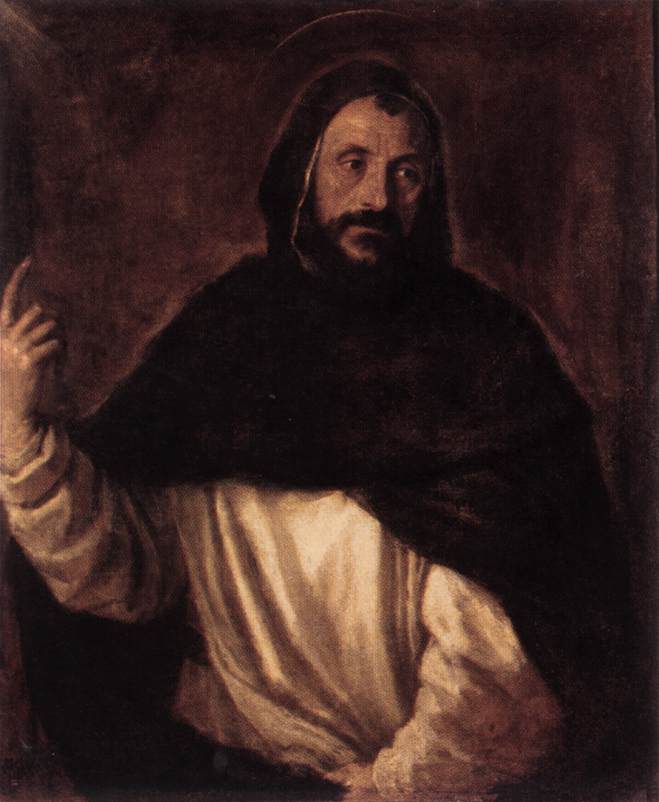
Conception of the Rosary - Early 13th Century
In the 13th century, many people think that Saint Dominic, who founded the Dominican Order, introduced the rosary. According to the story, the Blessed Virgin Mary appeared to Saint Dominic and gave him the rosary as a tool to fight against false beliefs (Albigensian heresy) and encourage devotion.
The early rosary had prayers that were repeated, especially the Hail Mary, said while using beads strung together. The beads helped people keep track of their prayers. Though using beads for prayer had been done before, it was during this time that the specific way the rosary was arranged, and the prayers associated with it started to come together.
Saint Dominic saw how important the rosary was and actively encouraged its use among the members of the Dominican Order. The rosary became a special part of Dominican spirituality, providing a way to pray and meditate on the life of Christ and the Virgin Mary.
As time went on, more and more people, not just in the Dominican Order, started using the rosary in the wider Catholic community. Its simplicity and ease of use made it appealing to those looking for a structured and thoughtful way to pray. With its growing popularity, changes were made to the rosary’s structure, and new prayers were added, shaping its development.
Even though the exact details about Saint Dominic and the rosary’s origin are based on tradition and belief, the 13th century is generally accepted as the time when the rosary began to take a recognizable form and became an important practice in the Catholic Church.
Spread and Development: 14th and 15th Centuries
In the 14th to 15th centuries, the Rosary became more widely used and liked in the Catholic Church. This time saw important changes that made the Rosary a central part of Catholic worship.
A big moment during this period was in 1409 when the term “Rosary” was first used to describe a set of prayer beads. This new name helped give a clear identity to this way of praying, which had been done with beads before. The word “Rosary” became a standard way to talk about this practice.
The way the Rosary is structured today started to develop during this time. It now has 15 parts called decades, each telling a different story about Jesus and Mary. These stories are grouped into sets: joyful, sorrowful, and glorious. This organized format made it easier for people to pray and think deeply.
The Dominican Order, especially Saint Dominic, had a big influence on the growth of the Rosary. According to tradition, Saint Dominic got the Rosary from the Blessed Virgin Mary, and the Dominicans actively promoted it. Their support helped many people see the Rosary as a meaningful way to pray.
Artistic representations of the Rosary became popular too. Pictures of scenes from Jesus and Mary’s lives became common, helping people visualize the stories while they prayed. These artworks added to the experience of praying with the Rosary.
In summary, the 14th to 15th centuries saw the Rosary grow in popularity. The use of the term “Rosary,” the structured format, the influence of the Dominican Order, papal recognition, and its move from mainly religious use to a beloved practice for everyone laid the foundation for the continued importance of the Rosary in Catholic worship.
Formalization and Papal Support: 15th and 16th Century
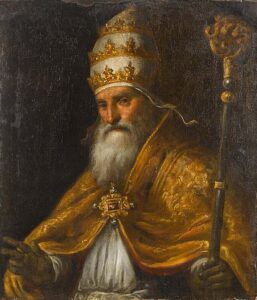
In the 16th century, the Rosary went through important changes that influenced its role in the Catholic Church. In 1569, Pope Pius V officially recognized the Rosary through a papal bull (Consueverunt Romani Pontifices), making it a legitimate and accepted way of devotion. During this time, there were efforts to make the structure of the Rosary clearer, with 15 parts called decades and specific stories gaining more definition.
The Dominican Order, which has a close connection to the Rosary’s history, continued to have a big impact. They actively promoted the Rosary as a way to meditate and think deeply. The Dominicans played a key role in making the Rosary more formal and spreading its use. In the 16th century, popes recognized how important the Rosary was for the community, encouraging people to pray together in the Catholic Church.
In summary, the 16th century was a time of big changes for the Rosary. It became more formal, got official recognition from the Pope, continued to be influenced by the Dominicans, encouraged communal prayer, enriched through art, and gained universal acceptance. All these things together made the Rosary a respected and commonly practiced form of devotion in the Catholic Church, leaving a lasting impact on its role within the Church.
Widespread Devotion: 17th and 18th Century
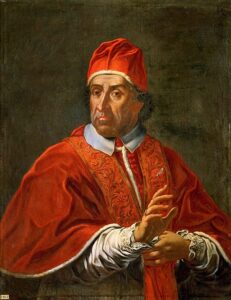
Between the 17th and 18th centuries, the story of the Rosary unfolded amid a changing landscape of religious and cultural developments in the Catholic Church. The Rosary, a way of devotion involving repeated prayers, saw important changes in how it was practiced and acknowledged during this time.
Popes in this era actively embraced the Rosary, supporting and teaching about its spiritual importance. Once considered a personal devotion, the Rosary gained recognition from the Church leaders, who encouraged people to regularly practice it. This involvement by the Pope elevated the status of the Rosary, making it an important part of spiritual life in the Catholic Church.
In 1716, Pope Clement XI made a significant move by extending the celebration of the Rosary to the entire Church. This marked an important event in the Church calendar, highlighting the importance of the Rosary in the broader religious context.
While the most well-known apparitions of Mary happened later, there were reports of local apparitions connected to the Rosary during this time. Even though not all were accepted by the Church, these events added to the rich tapestry of Rosary devotion, especially in the regions where they occurred.
Communal expressions of devotion grew with the formation of Rosary confraternities and prayer groups. These groups, centered around the shared practice of the Rosary, created a sense of community and unity among believers. Reciting the Rosary together became a central part of these devotional communities.
Artistic representations thrived during this period. Paintings, sculptures, and religious items showed scenes from the lives of Jesus and Mary, adding a visual aspect to Rosary devotion. These artworks adorned churches and helped spread the message, appealing to believers on both a spiritual and artistic level.
In private and family settings, the Rosary remained important. Individuals and families embraced the Rosary as a personal form of devotion, finding comfort in its repeated prayers and reflections on the mysteries. Its adaptability and accessibility contributed to its lasting popularity in private devotional practices.
The Counter-Reformation, a response to challenges from the Protestant Reformation, emphasized popular devotions like the Rosary. The Church saw the Rosary as a powerful tool to strengthen Catholic identity and counter Protestant influences, leading to its widespread promotion and adoption.
The influence of the Dominican Order, tied to the Rosary through Saint Dominic, continued during this time. The Dominicans emphasized the Rosary as a way of meditation and contemplation, playing a significant role in promoting and sustaining its popularity.
In summary, between the 17th and 18th centuries, the history of the Rosary was marked by papal involvement, recognition in liturgical celebrations, reports of local Marian apparitions, the growth of communal devotion through confraternities, flourishing artistic representations, private and family devotion, Counter-Reformation efforts, and the enduring influence of the Dominican Order. Together, these elements shaped the diverse and dynamic history of the Rosary during this significant period in Catholic history.
19th and 20th Century
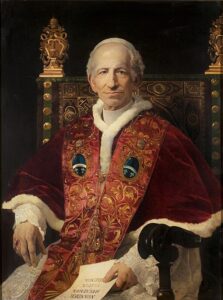
Between 1800 and 1999, the story of the Rosary is woven into the fabric of the Catholic Church’s changes and the world’s evolution. During this time, the Rosary continued to be an important spiritual practice, adapting to the changes in society and connecting with believers worldwide.
Visions of Mary, known as Marian apparitions, played a big role in shaping devotion to the Rosary. Events like the visions in Lourdes in 1858 and La Salette in 1846 captured the imagination of believers, highlighting the Rosary’s role in seeking help from the Virgin Mary. These events renewed the emphasis on the Rosary as a source of spiritual comfort and miraculous help.
Popes in this era, including Pope Leo XIII, stressed the importance of the Rosary through letters and teachings. Leo XIII’s letter “Supremi Apostolatus Officio” (1883) highlighted the Rosary’s role in nurturing piety and spiritual growth. The Pope’s support strengthened the lasting importance of this devotional practice.
During times of global conflict like World War I and World War II, the Rosary became a source of comfort and prayer. Soldiers and civilians turned to the Rosary as a symbol of hope and a way to seek divine help during tough times.
In the 20th century, Marian congresses became popular, providing a platform for people to recite the Rosary together. These gatherings celebrated devotion to the Virgin Mary, highlighting the communal and devotional aspects of the Rosary in the broader context of Marian spirituality.
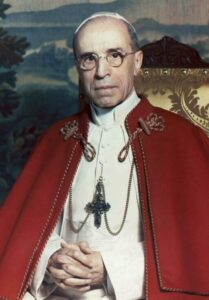
Changes in the liturgical calendar included new feasts related to the Rosary. Pope Pius XII instituted the Queenship of Mary in 1954, creating more occasions to celebrate the Rosary within the Church’s official schedule.
The Second Vatican Council (1962-1965) brought changes to liturgical practices. While some traditions adapted, the Rosary stayed popular. Efforts were made after Vatican II to update the Rosary for modern spirituality, introducing forms like the Scriptural Rosary to deepen reflection and meditation in prayer.
Pope John Paul II, in the late 20th century, played a key role in encouraging the practice of the Rosary. His support for the “New Evangelization” highlighted the Rosary’s power in personal and communal prayer.
Advancements in technology helped spread the Rosary. Television, radio, and later the internet became ways to broadcast and share Rosary prayers, making this traditional devotion accessible to a global audience.
Throughout the 19th and 20th centuries, the Rosary remained a universal symbol of Catholic devotion. Its impact went beyond cultural and geographical boundaries, establishing it as a timeless and enduring expression of Catholic spirituality.
2000 to Present History of the Rosary

Pope John Paul II added the Luminous Mysteries, also called the Mysteries of Light, to the regular Rosary in 2002. These mysteries highlight moments from Jesus’ public ministry, giving insights into his life on Earth. People pray the Luminous Mysteries on Thursdays, and they are meant to go along with the Joyful, Sorrowful, and Glorious Mysteries.

Charles Rogers is a resident of South Carolina and a retired computer programmer by trade. Raised in various Christian denominations, he always believed in Jesus Christ. In 2012, he began experiencing authentic spiritual encounters with the Blessed Virgin Mary, which led him on a seven-year journey at her hand, that included alcohol addiction, a widow maker heart attack and death and conversion to the Catholic Faith. He is the exclusive author and owner of Two Percent Survival, a website dedicated to and created in honor of the Holy Mother. Feel free to email Charles at twopercentsurvival@gmail.com.

We strive to provide the most complete and highest quality material we can for you, our readers. Although not perfect,
it is our desire and prayer that you benefit from our efforts.

